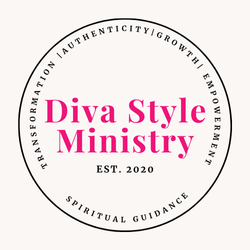Let’s explore how to convert the relentless stream of negative thoughts, which we often encounter in everyday life, and turn them into positive, empowering insights.
Whether it’s through media, social interactions, or our internal dialogues, negativity can be pervasive. But what if our minds could work like a magical factory, turning these negative thoughts into seeds of positivity and growth? This concept isn’t just a whimsical idea; it’s a powerful tool for personal development.
Let’s dive into how you can harness this transformative process to amplify your self-confidence, deepen your self-knowledge, and glide gracefully into life’s next phase.
The Invasiveness of Negativity
In today’s world, negative thoughts are omnipresent.
They infiltrate our lives through various channels – television, work, home, and especially online. It’s as if our brains are under constant bombardment from negativity, affecting our mental well-being and perception of the world.
There’s a transformative approach you can implement to combat this: envisioning your brain as a positivity factory. This metaphorical factory takes negative thoughts as raw materials and processes them into positive, constructive outcomes.
The Importance of Changing Our Reaction to Negativity
Why is this mental reprogramming important for everyone, but more specifically for women 50 and over?
Negative thoughts, if left unaddressed, can diminish your belief in yourselves and your abilities. They can lead to a cycle of bitterness and self-doubt, hindering personal growth and happiness.
The shift to a ‘factory mindset’ encourages us not only to recognize these negative thoughts but also to actively reframe them. It’s about learning to pause and consider different perspectives, understanding that disagreement doesn’t equate to invalidation.
This process of empathetic listening and open-mindedness is crucial in transforming how we perceive and react to negativity.
4 Steps to Positively Process Negative Thoughts
- Pause Before Reacting: When encountering opposing views, take a moment to digest what’s being said rather than immediately reacting. This pause can prevent misunderstandings and foster a more constructive dialogue. Keep at the forefront of your mind that silence does not equal agreement and take the pause when you need it.
- Seek Understanding: Try to see the world from the other person’s perspective. If it’s challenging, engage in calm inquiries (when possible) to gain more insight into their viewpoint. If calm doesn’t exactly describe your reaction, take a couple of deep breaths and ask questions. You might start with “What I heard you say was ____, is that what you meant?”
- Challenge Your Beliefs: Be open to questioning your long-held beliefs. Sometimes, our beliefs might be based on outdated or unexamined reasoning. What is it about what’s been expressed that is challenging you? Re-evaluating your instinctive beliefs and reactions can lead to significant personal growth.
- Embrace Diverse Perspectives: Recognize that different beliefs and opinions can coexist. You don’t have to 100% agree with the other person’s opinion or statement to learn from it or find value in it. Embracing diversity in thought can lead to enlightenment and a more profound sense of understanding and empathy with your fellow perfectly imperfect human beings.
By adopting these strategies, you empower yourself to transform negativity into a source of strength and positivity. This mental shift is not just about combating negative thoughts but about building a resilient, open-minded, and growth-oriented mindset.
[thrive_lead_lock id=’14708′]
Journaling Prompts to Transform Negativity
Use one or more of these prompts to start or deepen your personal journaling practice. Give yourself time to think about what the prompt brings up for you and explore your feelings on paper. If you need a journal, click HERE to see our available journals.
- Reflect on a recent negative thought and write about how you can transform it into a positive perspective.
- Describe a situation where you felt overwhelmed by negativity and how you responded. What would you do differently, and why?
- Write about a time when someone else’s negativity impacted you. How did you handle it, and how could you handle it differently in the future?
- Think of a belief you hold strongly. Write about how this belief can be challenged and viewed from a different angle.
- Journal about a negative thought that frequently occurs to you. What is the root of this thought, and is it really true and factual? How can you address it more positively and loosen its grip on your heart, mind, and reactions?
Affirmations to Overcome Negativity
Read the set of related affirmations below aloud. It’s important to your conscious and subconscious mind to hear the affirmations said in your own voice. Choose one or two of the affirmations from the set to start working with. You only need one or two affirmations, used consistently, to make a substantial change in your life.
Choose one affirmation that feels easy to you and choose another that generates resistance or disbelief. The idea is to practice extending your current self-imposed limits and encourage growth.
Say your chosen affirmation loud enough for your mind to hear your voice saying the words and take notice of how you feel as you begin and as you continue your practice. Repeat your chosen affirmation multiple times a day for at least 30 days and reinforce your affirmation by writing it in your journal.
You can change your life by beginning an affirmation practice – using one or two favorite affirmations over the course of 30 to 60 days can permanently change your mindset and your life.
- “I transform my challenges into opportunities for personal growth.”
- “I embrace diverse perspectives to enrich my understanding and combat negativity regarding diversity.”
- “I choose to focus on positive possibilities in every situation – starting with my perceptions and reactions.”
- “I am open to questioning my beliefs to foster personal growth and expand my mindset.”
- “I am a catalyst for positivity, transforming negativity around me.”
[/thrive_lead_lock]





